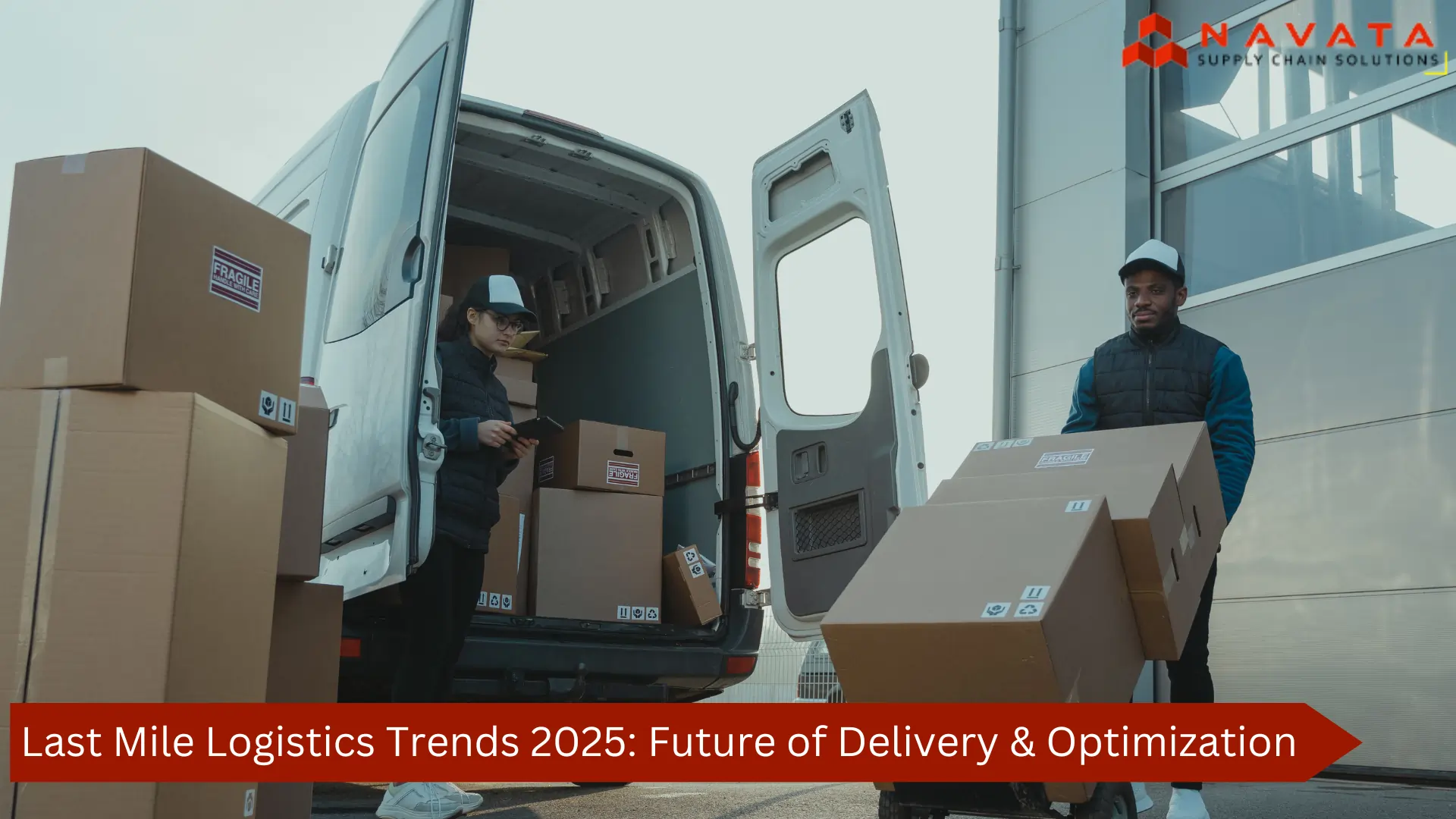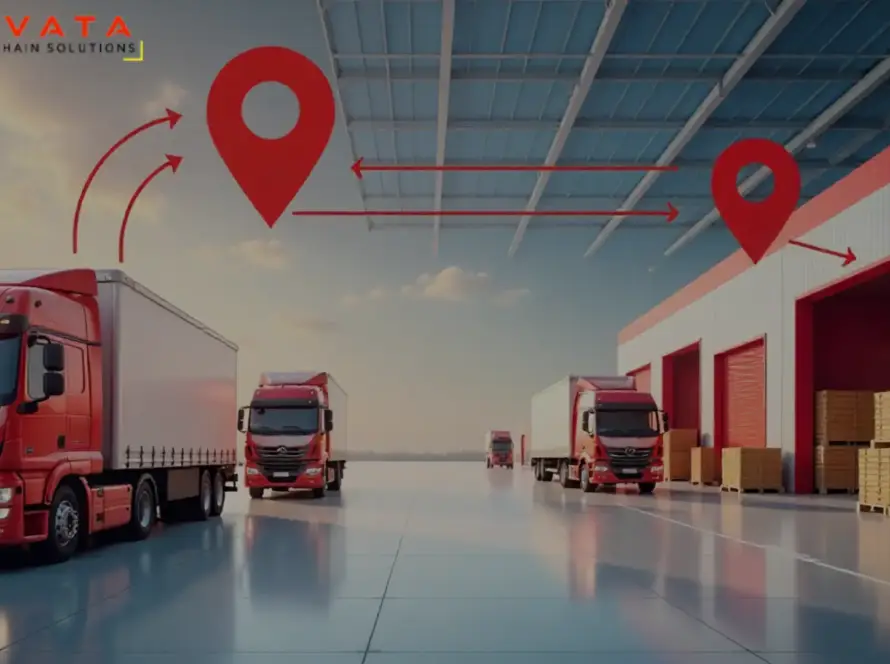Last Mile Logistics Trends 2025
The e-commerce has transformed last-mile delivery from an operational necessity into a crucial driver of customer satisfaction and business growth. As we step into 2025, the landscape of last mile logistics continues its rapid evolution, pushing businesses to innovate and redefine their strategies.
To stay competitive, here are the pivotal last mile trends 2025 and technological innovations set to shape last mile delivery services. This outlook explores the future last mile delivery landscape and significant delivery trends 2025.

1. The Rise of Automation and Robotics
Automation and robotics are no longer futuristic concepts; they are becoming a tangible reality in last-mile delivery. These technologies are fundamentally changing how packages move, from the warehouse floor to the consumer’s doorstep.
- Within fulfillment centers, automated systems and robotics streamline operations, reducing reliance on manual labor and enabling businesses to handle higher delivery volumes with greater efficiency. This focus on warehouse automation trends is critical.
- Beyond the warehouse, autonomous vehicles like drones and ground robots are emerging.
- While regulatory and safety hurdles remain, advancements in airspace management and drone technology are paving the way for broader deployment, offering unparalleled speed and efficiency, especially for smaller packages and in challenging terrains.
- Businesses seeking automated last mile solutions will find these technologies increasingly vital as delivery automation becomes standard.
2. Drones and Airborne Delivery
Role of drone in last mile delivery is revolutionary offering a swift solution for bypassing urban traffic congestion and reaching remote areas. Their unique capabilities make them a powerful tool for rapid delivery.
- Drones’ ability to cover significant distances and traverse difficult terrains makes them invaluable for time-sensitive deliveries, from medical supplies to perishables.
- As infrastructure and regulations evolve, drone delivery future applications will offer increasingly flexible services, providing a competitive edge for businesses that embrace this airborne solution.
- The concept of airborne logistics is certainly taking off, marking a significant shift in logistics innovation 2025.
3. Sustainability: A Core Strategy
Eco-consciousness is no longer a niche concern for consumers; it’s a rapidly growing expectation. In 2025, sustainability will be a core strategic imperative for last mile logistics, influencing every decision from vehicle choice to packaging.
- Businesses are increasingly adopting electric delivery vehicles and cargo bikes for urban deliveries to reduce carbon emissions.
- Beyond transport, the focus extends to eco-friendly packaging, optimized delivery routes to minimize fuel consumption, and sustainable warehouse operations.
- Embracing green last mile practices not only aligns with consumer values but also significantly enhances brand reputation and contributes to a healthier planet.
- This makes sustainable delivery 2025 a critical focus, driving the adoption of eco-friendly logistics.
You May Also Like to Read: What Is Green Supply Chain Management & It’s Effects
4. AI and Big Data for Optimal Delivery
Artificial Intelligence (AI) and Big Data are becoming indispensable tools for optimizing last-mile operations. These technologies provide the intelligence needed to make smarter, faster, and more efficient delivery decisions.
- AI-powered route optimization analyzes real-time data, including traffic, weather, and driver performance, to create the most efficient delivery paths, leading to reduced mileage, fuel consumption, and carbon emissions.
- Predictive analytics, driven by AI, enables businesses to forecast demand with greater accuracy, allowing for strategic inventory pre-positioning closer to consumer centers.
- This “predictive shipping” minimizes fulfillment times, reduces stockouts, and enhances resource allocation.
- Businesses will increasingly look to AI last mile optimization and predictive logistics 2025 to gain an edge, making AI in logistics a non-negotiable.
Transform Your Last Mile Logistics Today!
5. Localized Delivery Hubs and Micro-fulfillment Centers
The demand for faster delivery times, including same-day and even instant delivery, is driving a fundamental shift in warehouse placement. Bringing inventory closer to the consumer is key.
- The expansion of localized delivery hubs and micro-fulfillment centers enables businesses to significantly reduce travel time and delivery costs, improving service levels.
- These strategic urban delivery hubs, often equipped with advanced loading systems and smooth goods flow infrastructure, ensure seamless distribution within tight delivery windows.
- Some developers are even offering capital expenditure solutions for storage racks and automation-compatible infrastructure within these in-city warehouses, further streamlining operations.
- The growth of micro-fulfillment is a key trend addressing last mile challenges.
6. The Shift Towards Alternative Delivery Options and Hyperlocal Experiences
While home delivery remains popular, consumer preferences are diversifying. Convenience and flexibility are driving the growth of alternative delivery methods.
- Alternative delivery options are gaining significant traction, now accounting for a substantial portion of e-commerce deliveries.
- Pickup points with their extensive networks, offer economical shipping and convenience, allowing customers to collect packages at their leisure.
- Automated lockers are experiencing rapid growth, providing 24/7 accessibility and greater flexibility.
- This shift towards “out-of-home” (OOH) options offers carriers multiple advantages, including streamlined delivery routes, reduced congestion, increased predictability, and optimized returns processing.
- Consumer expectations for hyperlocal delivery future services and personalized delivery experiences are also intensifying, with demands for flexible delivery windows, real-time tracking, and dynamic rescheduling options. This signifies a major shift in consumer expectations for delivery.

Conclusion
In 2025, successful last-mile logistics will hinge on agility, efficiency, and a deep understanding of evolving consumer expectations. The integration of advanced logistics technology like AI, robotics, and drones, coupled with strategic infrastructure like localized hubs and a strong focus on sustainability, will be crucial.
By embracing these last mile logistics trends continuously optimizing their operations, businesses can not only meet the growing demands of the e-commerce industry but also solidify their competitive position and drive sustained success in the dynamic world of last mile technology. The future of logistics is being redefined by these innovations.
Thanks For Reading: Last Mile Logistics Trends 2025: Future of Delivery & Optimization
Powered By 360Presence


1 Comment
Comments are closed.